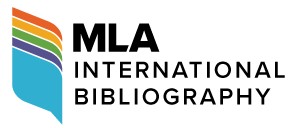Abstract
During the Ming and Qing dynasties, the term xiaopin (sketches), encompassed various collections of poems, essays, or even selected works and anthologies as categorized in the Four Treasuries. In literary criticism, it referred to works created for entertainment or as variations in style or form. As book series, it covered the entire scope of the Four Treasuries. From the Wei and Jin dynasties to the Ming and Qing dynasties, the genre of xiaopin gradually expanded to include poetry, ci-poetry, qu-poetry, essays and fiction. However, the term xiaopin wenzi (sketch writings) was used more frequently than xiaopin wen (sketch prose). The concept of xiaopin wen as prevailed during the Republican period was initially unclear, and its distinction from the “prose poem” was often blurred. As a translation of the English terms “essay” or “sketch,” and influenced by Japanese terminology, xiaopin wen and xiaopin were often conflated in translation, reflecting a stylistic self-consciousness shaped by Western literary theories. Zhou Zuoren and others redefined the concept of “late Ming xiaopin,” replacing Chen Jiru, a key figure in the Four Treasuries' General Catalog, with the Gongan and Jingling Schools as representative authors. This shift spurred a proliferation of prose writings and numerous anthologies on late Ming xiaopin, further solidifying the genre's stylistic characteristics and attributes.
Keywords
xiaopin (literary sketches), literary style, the late Ming dynasty, Abstracts of the Four Treasuries, conceptual history
First Page
160
Last Page
169
Recommended Citation
Zhibo, Tang. 2024. "Stylistic Expansion and Self-Consciousness: A Conceptual History of the Late Ming Sketches." Theoretical Studies in Literature and Art 44, (5): pp.160-169. https://tsla.researchcommons.org/journal/vol44/iss5/16


